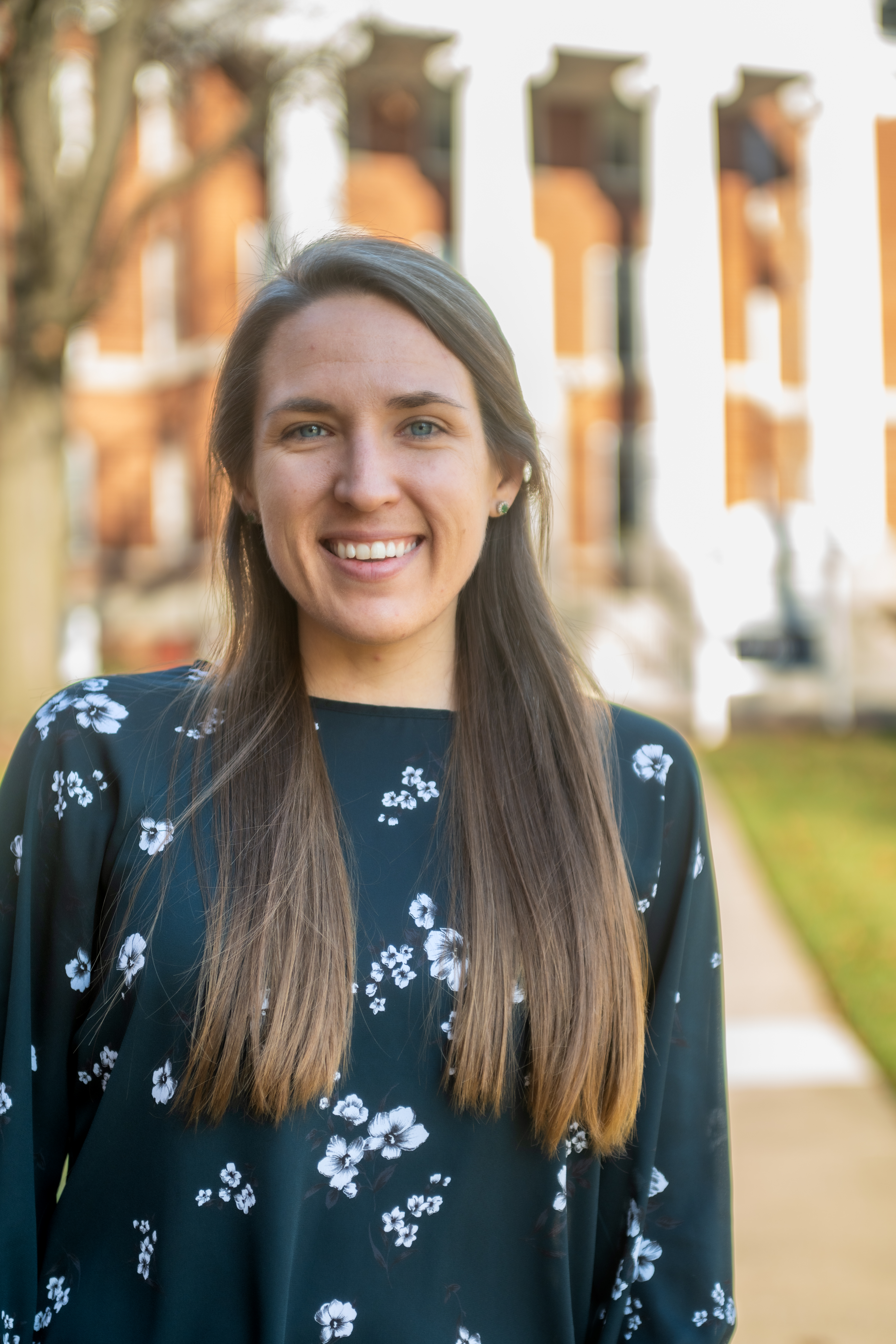For a Healthier Hood

Amanda Dymek creates and manages a multidimensional, multigenerational wellness program to benefit the entire Hood campus community.
Amanda Dymek
Title
Director of Wellness
What brought you to Hood? And what brought you into the wellness field in general?
I fell in love with the public health field through a post-college internship where I had the opportunity to educate and engage a community around several health and wellness issues. Since then, I’ve worked in positions where the focus has been on a variety of health issues including nutrition, chronic disease prevention and general employee wellness. I was drawn to Hood because of the breadth of wellness programs that were available to the community. The College aims to have a holistic understanding of well being and therefore offers programs and resources on topics that often are overlooked such as financial wellness, community engagement and mindfulness. I was excited to work for an institution that has been recognized across the state for its workplace wellness efforts and resources. I love the friendly, team-based atmosphere at Hood. In my experience I have found folks to be so supportive and willing to help me with various projects.
Describe the wellness program on campus, who it serves and how.
I am fortunate to serve the entire Hood community including students, faculty and staff. For students, a lot of programming revolves around education and prevention. For the undergraduate student population in particular, college is usually the first time they take ownership over their health and well-being. Through programming and sharing of resources I hope to give them the knowledge and tools to start navigating the health care system while also helping them build healthy habits that will last into adulthood.
For employees, the goals are a little different. Hood’s employees are one of the greatest resources we have and so we want to inform them of the benefits available through human resources in addition to offering programs during the workday that help them stay healthy at Hood. I offer programs around nutrition and packing healthy meals. We have a weekly yoga practice that provides an opportunity for movement and mindfulness. These activities and others are not just to give employees a break from work, but they are intended to help them be more productive and successful in their roles on-campus.
How did the effects of the pandemic affect wellness programs today at Hood?
I think one of the impacts of the COVID-19 pandemic is the amount of health information people are seeking from online sources, particularly social media. I know it can be challenging to get in front of a doctor, so it’s great to have health information from the CDC or NIH free and easily accessible on the web. However, when we aren’t critical of the source of the information we can be misled and make choices that aren’t evidence-based. Our faculty and library staff are teaching students what it means to review and research resources for academic assignments; I think we need to take this same approach to help our students learn how to review resources for health information.
Another major component of Hood wellness programs post-pandemic is to create opportunities for social engagement and connection. Students (and faculty and staff) are struggling to make connections with one another, so I try to host several programs per semester for folks to meet new people and be connected to others. For example, in the fall semester I partnered with the library staff to offer a “crafternoon" in the library café. This event was great for students because they could sit in small groups at tables or lounge nearby on couches and either work independently or many folks ended up helping each other make small clay figurines or were teaching one another to braid macrame keychains. It was amazing to see how engaged students were with one another over these creative activities!
What's on your bucket list for the future of Hood wellness programs?
I’m currently working with human resources to expand and strengthen our employee wellness program with our benefits partners. For example, we want every employee to have their annual, preventative wellness exam and we’re thinking of creative ways to promote and encourage employees to make these preventative exams a priority every year.
For students, I’d love to establish a peer health education program on-campus. This means students would be trained to become peer educators and would plan and implement health education programs on-campus. These educators could host a tabling event in the dining hall on health literacy in order to teach their peers how to evaluate online health information, or they might host a program in Whitaker ahead of the NCAA March Madness tournament to educate their peers on the risks of problem gambling. We know students go to their friends first when they have questions and so the value of peer education programs is that students can learn and share factual, evidence-based information to their friends and peers.
What does wellness mean for you, personally?
For me, connection is a big part of my well being, whether it is connecting to people through social time with family or friends, connecting with nature through spending time in my garden, or connecting with the world by reading about true or fictional stories...When all these pieces come together, I feel filled and prepared to respond to the daily joys, demands and challenges.
From summer 2024 alumni e-news:
Are you ready to say Hello?
Choose a Pathway
Information will vary based on program level. Select a path to find the information you're looking for!
